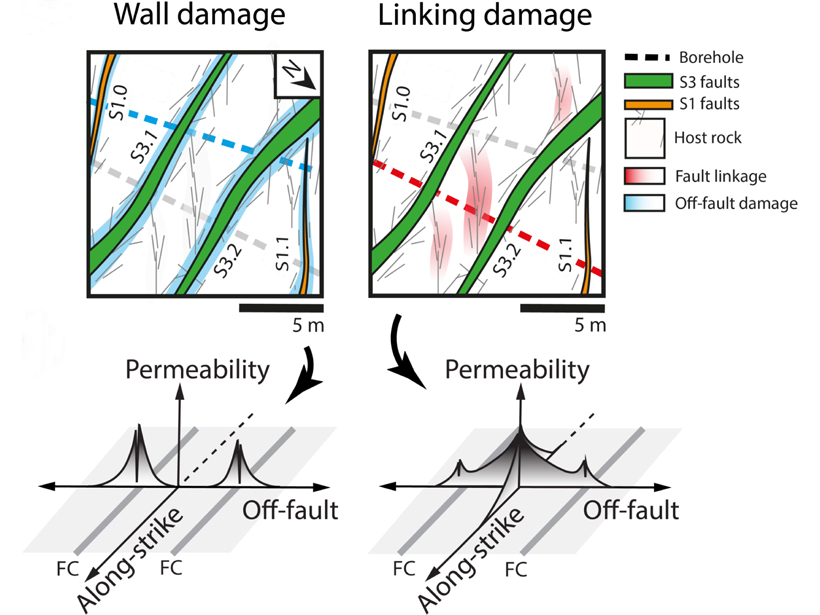Source: Journal of Geophysical Research: Solid Earth
There is abundant indirect evidence that some faults, and the damaged zones surrounding them, are preferential conduits for fluid motion in the shallow crust. Brixel et al. [2020] carried out extensive field pressure testing from boreholes crossing a well-characterized fault zone within a metamorphic crystalline rock mass. These tests suggest that the in-situ permeability, measured at a scale of approximately 1 meter, systematically varied from 10-13 m2 to 10-21 m2 in a narrow zone adjacent to the fault core.
These tests also revealed that fracture geometries and topology dominated the expected in situ stresses in controlling the transmissivity of the fractures. Further, there appears to be a power-law relationship between the fracture densities measured from core and geophysical logs to the permeability.
This relationship can be further complicated by networks of localized fractures oriented subparallel to the fault cores that provide fluid communication pathways between them. This work is novel in that such detailed measurements of permeability near faults are extremely rare, and the results aid in our understanding of crustal fluid motions.
Citation: Brixel, B., Klepikova, M., Jalali, M. R., Lei, Q., Roques, C., Krietsch, H., & Loew, S. [2020]. Tracking fluid flow in shallow crustal fault zones: 1. Insights from single‐hole permeability estimates. Journal of Geophysical Research: Solid Earth, 125, e2019JB018200. https://doi.org/10.1029/2019JB018200
—Douglas R. Schmitt, Editor, JGR: Solid Earth
Text © 2020. The authors. CC BY-NC-ND 3.0
Except where otherwise noted, images are subject to copyright. Any reuse without express permission from the copyright owner is prohibited.

